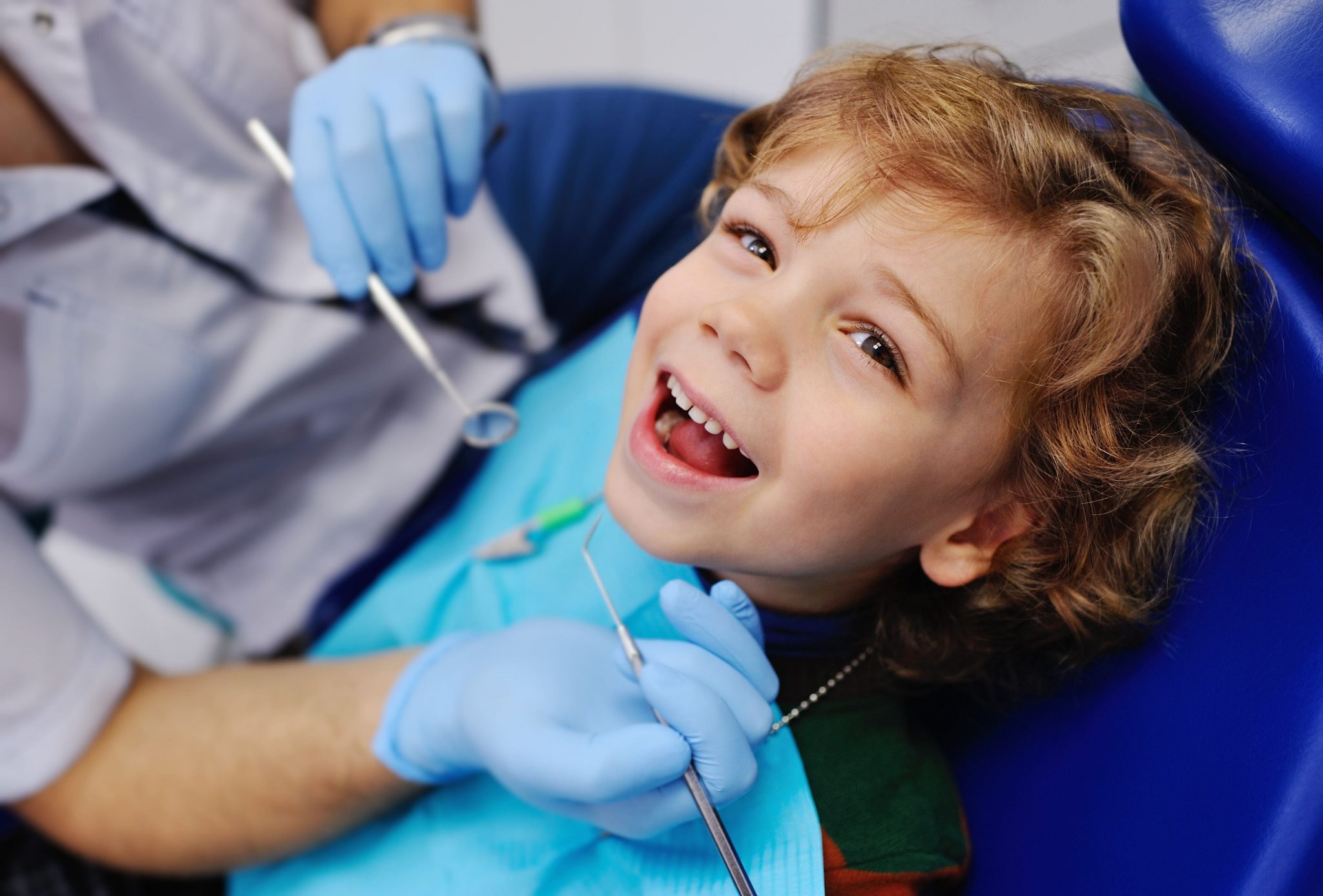Planning your child’s first dental visit can be stressful. Many parents wonder when the perfect time is to bring their child in for their first exam. The American Academy of Pediatric Dentists or AAPD recommends that children visit the dentist by the age of one, or when they first notice signs of teeth erupting. Typically, primary teeth do not erupt until about six months of age.
Parents tend to worry how their child will feel or behave at the dentist for the first time. There are many benefits to visiting the dentist starting at a young age, and with positive encouragement and our amazing staff we always ensure your child’s first visit and every visit after will go well.
There are a few things we recommend to parents to help prepare their child to visit our office for the first time. We want all of our patients to feel calm and relaxed and enjoy their visit. Our staff is specially trained to work with children, and they are in good hands while in our care.
Helpful Ways to Prepare Your Child Before Their First Visit to Our Office
- We welcome all new patients to schedule a tour of our office and meet our staff. This helps your child get to know where they are going, and when they arrive they will feel more comfortable because they have already been here for a visit.
- Talk to your child about how important it is to see your dentist regularly. With positive attitude your child will feel excited and not afraid, and will enjoy visiting our office.
- There are dental books and TV shows available that you can show your child so they can get an idea what a dental office looks like, and what we do during a dental exam and cleaning.
- During your child’s appointment we recommend bringing in any comfort items such as a stuffed animal or blanket to make your child feel relaxed.
- Our staff provides each child with a reward at the end of each visit so they have something to look forward to. Parents are welcome to plan for a reward as an incentive to help the child get through their first appointment.
- It is important to talk to your child about how important dental hygiene is. Keeping our teeth and gums clean so we can have beautiful smiles can help teach them good oral hygiene habits at a young age.
Starting your child out right with proper dental care helps to set the stage for later in life and teaches children good oral hygiene. We look forward to establishing a good relationship with each of our pediatric patients, and our staff will help your child understand how important it is to take care of your teeth and visit our office regularly.
Our dental exams are thorough and we can check for any issues as your child grows older. We believe in preventative care to help keep your child’s teeth feeling and looking their best.
Are You Interested in Scheduling Your Child’s First Exam?
If you are interested in scheduling your child’s first dental exam we are here to help. Contact our office and our friendly staff can assist you!
Helping your child take charge of their oral health at a young age is important and our staff is here to support both our pediatric patients and their parents, and provide the highest level of dental care.
We look forward to meeting you and having your child join our dental family.




